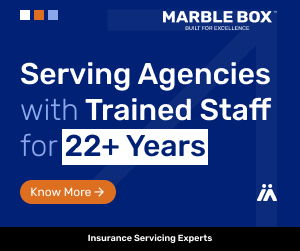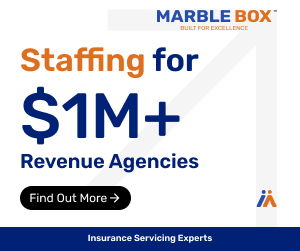There are many headwinds a P&C insurance agency faces today. The one-two punch of trying to save clients during significant auto premium increases while at the same time managing some shrinking base commission percentages can present real challenges to any agency owner. Even with the advantages an independent agency has over a captive agency with often better close ratios, higher commission rates per client, and often better agency retention from having more insurance carrier choices, these times can be challenging. What follows are some thoughts on what to do to manage your agency in the face of those sometimes-thrashing winds of change. This is an overview of fundamentals to a playbook for success. Just as NFL teams each know what to do, the secret is in the execution of knowing how to do it.
Negotiate with your insurance carrier and foster strong relations. Most insurers are doing what they need to do in order to both compete and tackle increasing loss costs driven by the double whammy of increasing frequency and severity. For many insurers, particularly in the independent agency channel, the last thing they want to do is raise the ire of their primary distribution partner, you. But many insurers did not see this cycle, and the drivers of it, sustaining that way it has. These drivers include increased driving due to relatively inexpensive gas; more inattentive driving as a result of pervasive cell phone use; more expensive car parts from new technology; increased litigation; and continued rising injury costs. If you are a top agency performer with trends historically favorable in loss ratios, mix of business, and growth, you come from a position of strength to discuss compensation as it relates to performance. It does work, my friends. However, if you are unable to negotiate commission right away, then work to set hit-it-and-get-it goals with your insurer(s) to earn back compensation, or request co-op funding specifically targeting the bullseye of the carriers’ appetite, where usually insurers are still making a profit even in tough times.
Understand their business and help them to understand yours. Most insurers look inside their own house first to cut costs before approaching the topic of reducing agency commissions. However, they do undertake market and competitive studies, and generally have a good pulse on what other insurers are doing on this front. Nonetheless, sometimes they do not fully grasp the magnitude of their actions, such as the impact a three-point reduction from a fifteen percent base commission can have. A twenty percent operating hit to an agency’s income is significant. Granted, it may not happen all at once if it is a new business only reduction, but it is a dangerous signal, one that must be fought. Counterpoints about the increase in premiums being the same as a commission increase are short-sighted. Any insurance agency or carrier must increase customers to be viable over the long term. In addition, while it is true that a premium increase can be a de facto raise, the point ignores the opportunity cost and time investment spent to retain an existing client versus growing organically one’s client base.
Your Choices. At the risk of stating the obvious, if negotiations with your insurer(s) do not work, you must find ways to increase your revenue or reduce your expenses. The alternative is to carry the loss, which is not a sustainable winning proposition.
Grow Revenue by Writing & Keeping More and Reviewing Your Operational, Technological and Analytical Prowess
- Tune Up Your Operation. Be sure your team, including sales and service, understands the situation and can execute to meet the performance bar and expectations that are about to be raised. Review what your agency stands for, the value you bring and your agency’s compelling differentiation. Emphasize how price is important, but it is NOT the singular driving force in the sale of insurance. Client-customer experience/service, education; your coverage expertise and resulting asset protection; and your agency’s reliability, trust, and relationship all should enter into the sales equation. When a claim takes place, the reality is that the customer’s glee over a monthly savings goes out the window if the right coverage and right asset protection are not in place. Coverage always trumps price when a claim occurs, something staff can sometimes forget during the sale.
- Review your compensations plans. Are they designed to drive the desired staff behavior you want? Do you have incentives to account round at the point of sale, to round existing monoline business, to have the majority of your accounts written on EFT, RCC, or paid-in-full payment plans, which have markedly better retention? Do you offer incentives for referrals obtained at the point of sale and/or that are otherwise converted into sales? Compensation should be geared to drive performance to make up for the shortfall in revenue over time, particularly in year two as new renewal income kicks in and your income stream is stabilizing and should be growing..
- Review the analytics you typically look at. Tweak as needed. The old saying about managing what you measure is true. Some of the most important metrics to know on a weekly or monthly basis are: Source of Business (marketing program, referral, your affinity network of relationships, etc.); Close Ratio by Producer; New Business Written premium; Retention numbers and Business Lost – why, to whom? If you don’t have an agency management system (most should be able to generate such data), a simple individual or aggregated Excel tracking document on a shared drive on Google Docs can work. Regarding efficiency and productivity, do you know what is a reasonable amount of work for sales and service staff to have? The Big I’s Agency Universe Study and other related studies are a good start. Depending on experience the range can be from 500 to 750 clients per CSR who does sales and service for personal lines. Are you tracking production data by CSR/producer, even if they are paid hourly?
Looking to start an Agency? Get detailed information by reading our Guide to Starting an Insurance Agency











